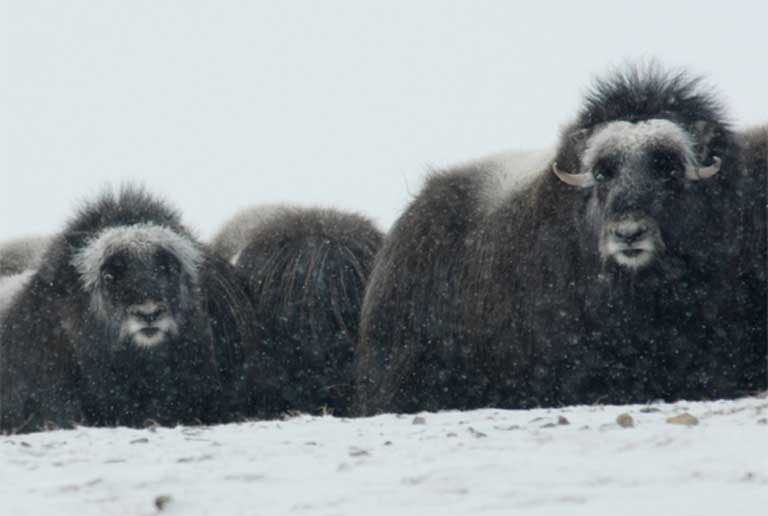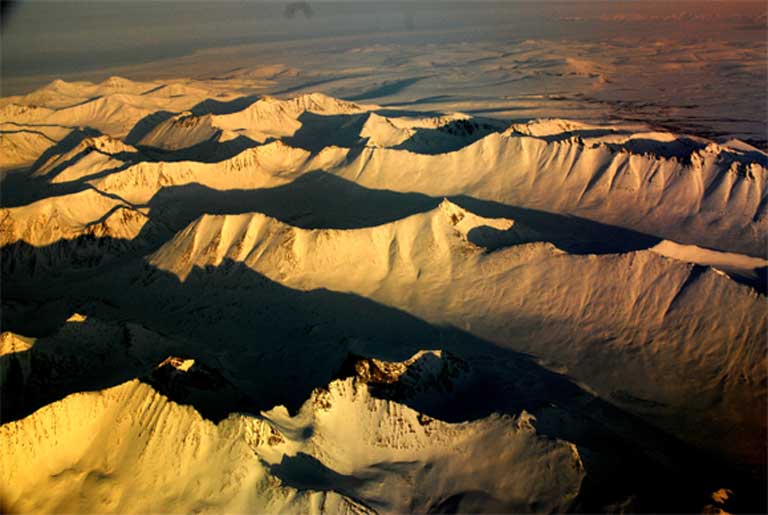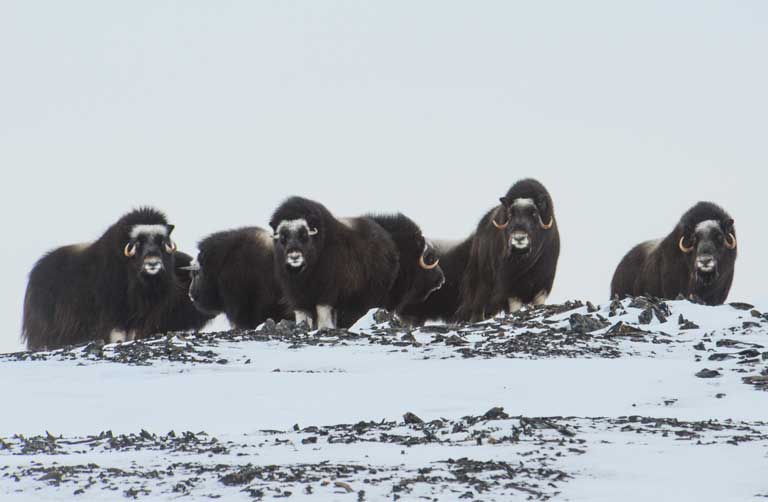- Past studies have looked at Arctic climate change impacts on wildlife primarily among marine animals and with polar bears, but there is little data on most terrestrial mammals.
- Now, As part of a broader attempt to develop an ecological baseline for Arctic wildlife, researchers have focused on muskoxen, the least studied mammal in North America.
- According to a new study, increasingly common extreme weather events – such as rain-on-snow and extremely dry winter conditions occurring in Russia and Alaska during muskox gestation – result in smaller head size among muskox young. Smaller animals generally have poor survivorship rates.
- Scientists say that, with the Arctic warming twice as fast as the world average, new studies are urgently needed on cold climate mammals including muskoxen, reindeer and caribou, to determine how rapidly escalating climate change up North is impacting wildlife, habitats and ecosystems.

In Greenland’s Arctic, the Inuit have a word to describe a bizarre, natural phenomenon that occurs within the frozen landscape: Sassat, which translates as “concentrated animals offered as food.” This word has historically encompassed a range of scenarios, including the spectacular sea ice entrapment of 150 narwhals, 170 belugas and uncounted sea otters in southern Berinigia across the historical record.
Increasingly, though, sassats aren’t limited to marine mammals. A Chukchi Sea winter tsunami in 2011, for example, entombed 52 wooly muskox and killed them. The effects of a changing ocean/climate are coming ashore in the Arctic.
Once rare extreme weather events like rain-on-snow, ice tidal surges, and severely fluctuating winter precipitation have become characteristic of the new Arctic, and scientists want to know exactly how these weather and climate patterns are impacting the region’s animal populations.
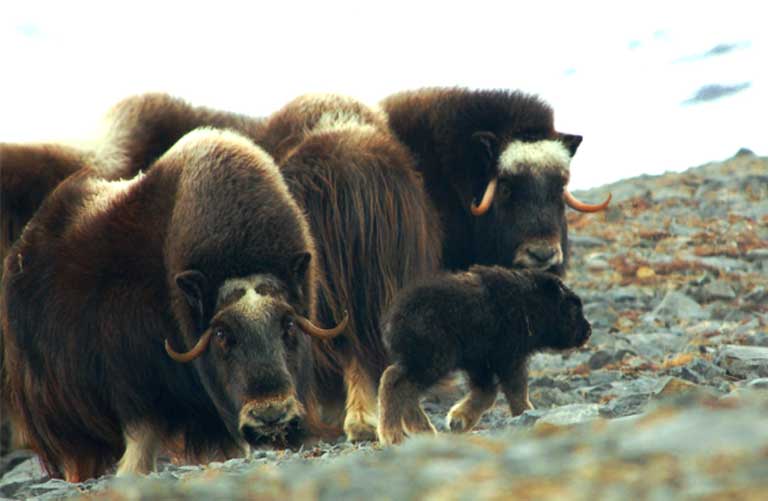
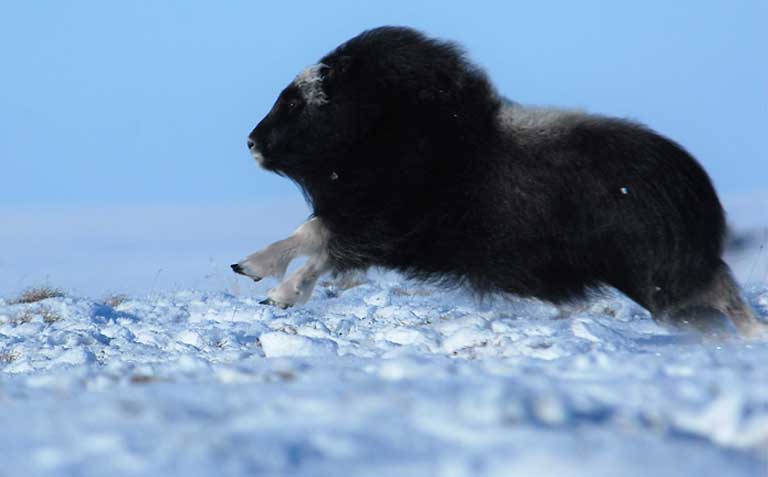
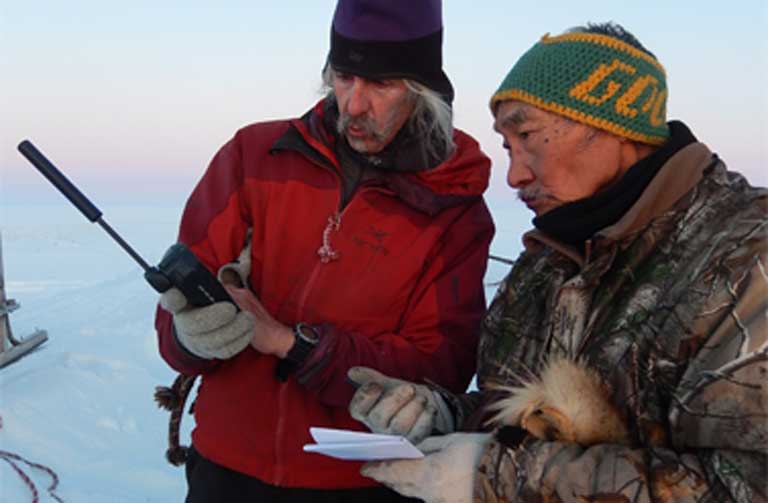
As part of a broader attempt to develop an ecological baseline for Arctic wildlife, researchers have recently focused on muskox, the least studied mammal in North America. “Across a range of species, we’re seeing direct and indirect effects of warming which affect a lot of different parameters of animals’ biology,” said Joel Berger, a senior scientist at the Wildlife Conservation Society.
In a recent study presented in Scientific Reports, Berger and his co-authors found that the head size of juvenile muskox in Russia and Alaska was smaller, and negatively impacted after extremely dry winter conditions and rain-on-snow events during gestation.
The likely cause: warming temperatures have altered air velocity and how long sea ice stays in the Arctic, which in turn has modified oceans currents and the timing and intensity of precipitation. More rain is now reaching some inland areas than snow in the winter months. If temperatures drop below freezing, the ground can ice over, requiring muskox to exert more energy to access food. Conversely, rain without freezing temperatures can make it easier for the animals to reach plants by reducing the snowpack. But without insulation, plant productivity can decline during the next growing season. If mothers are unable to meet the nutritional needs of their gestating babies, muskox young will suffer the consequences.
Over seven years, researchers examined the head size of muskox at three different study sites in the Russian and Alaskan Arctic using telephoto lenses and rangefinders. Marci Johnson, then a biologist with the U.S. National Park Service based in Kotzebue, Alaksa, assisted with radio tracking collared animals, while other research parties traveled by snowmachine for hundreds of miles across drifted snow. “Sometimes it would take them a day to travel between two groups of muskoxen,” Johnson said, describing the difficulties of doing such a study.
Ultimately, the researchers found that the smallest one- to two-year-old muskox in the dataset occurred after the winter of 2007-2008 when no precipitation occurred between October and April. The largest head sizes followed the wettest winter in their data. (On the Tibetan Plateau, endangered wild yaks, a family relative of muskox, have been shown to have less lactation when snow is scarce.) For three-year-old muskox, the largest animals were those that experienced no rain-on-snow events during gestation.
The East Asian sector of Bergingia on Wrangell Island experienced two times more frequent rain-on-snow events, colder temperatures and shorter growing seasons than conditions at Alaskan study sites. As a result, Wrangell Island muskox were smaller than their Alaskan relatives.
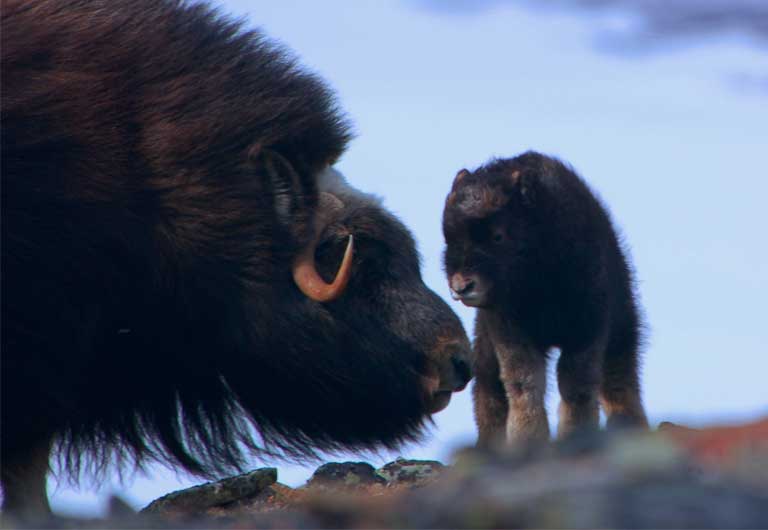
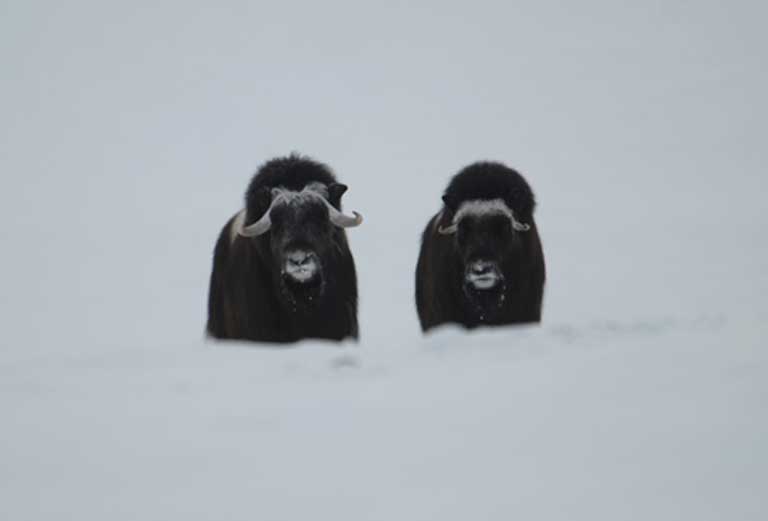
“The broader issue dealing with juvenile sizes is that smaller animals have poor survivorship,” says Berger. “We know that [to be true] for a wide range of species. For muskox, we’re using head size as an index to understand questions about population health and population trajectories.”
Because so little baseline data exists on muskox, it’s unknown how smaller muskox, or fewer muskox, could be affecting their surrounding habitat and ecosystem; what plants, birds, and other mammals could be impacted. Importantly, what this and other research shows, is that polar bears are no longer the only terrestrial mammals feeling the heat in the Arctic.
In coming years, scientists hope to expand their knowledge of how climate change impacts terrestrial mammals throughout the Arctic. Several recent studies have, for example, examined the impact of icing on reindeer and caribou herds there. It’s long been believed that the periodic icing of reindeer and caribou winter ranges is a cause of mass starvation, extirpation of local populations, and catastrophic declines in numbers. But a 2016 study found that there are few datasets showing hard snow or ice present on ranges where populations declined in the winter. Rather, climatic conditions associated with more snow or winter warming were found to increase animal abundance in established populations.
Berger and other scientists agree that – with the Arctic warming twice as fast as the world average – deeper research into impacts on Arctic mammals and ecosystems is urgently needed.
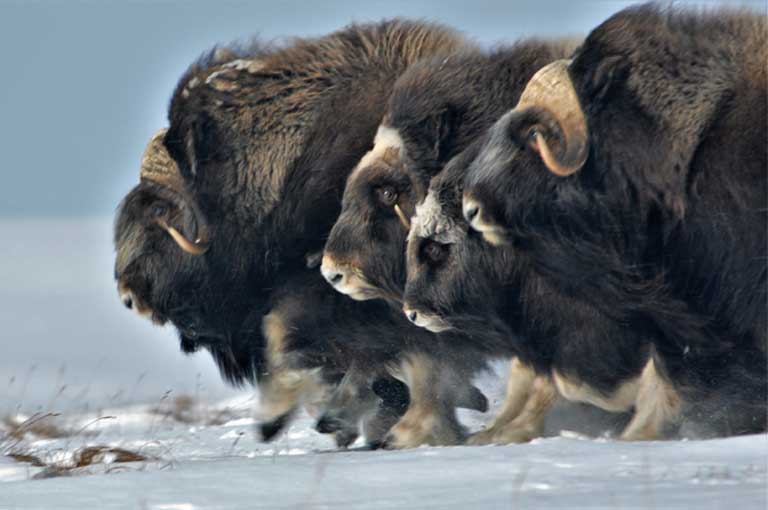
Citations:
Berger, J. et al. Climate Degradation and Extreme Icing Events Constrain Life in Cold-Adapted Mammals. (2018) Scientific Reports. 8. Article 1156
Tyler, N. J. C. Climate, snow, ice, crashes, and declines in populations of reindeer and caribou (Rangifer tarandus L.) (2010). Ecol. Monogr. 80, 197–219
FEEDBACK: Use this form to send a message to the author of this post. If you want to post a public comment, you can do that at the bottom of the page.
